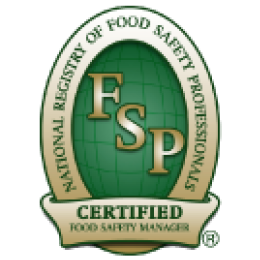Water is a vital resource that we depend on for our daily lives. However, the quality of our tap water may contain hidden contaminants that pose potential risks to our health. In this article, let's delve into several important topics related to tap water contaminants to gain a comprehensive understanding of each one.
The Hidden Intruders: Common Contaminants in Tap Water
Heavy Metals:
One of the primary concerns is heavy metals, particularly lead. Lead contamination can occur in older homes and buildings due to aging infrastructure. It is crucial to be aware of the dangers of lead in tap water, as it can have severe health risks, especially for children. Testing methods are essential to monitor lead levels and ensure the safety of our drinking water.
Mercury:
Mercury contamination is another issue that may originate from industrial processes. Understanding the sources of mercury in tap water and its potential health risks is crucial. To address this concern, regulations, monitoring, and industrial responsibility play significant roles in ensuring the reduction and prevention of mercury contamination.
Microorganisms & Protozoa: Tiny Trouble-Makers
Microorganisms, such as bacteria and protozoa, can contaminate tap water and lead to illnesses. It is important to be knowledgeable about the common bacteria found in tap water and the associated health risks. Water treatment methods, such as disinfection and chlorination, are effective in eliminating these microorganisms. Additionally, preventing the regrowth of protozoa, including parasites like Cryptosporidium and Giardia, requires advanced filtration techniques and proper maintenance.
Chemicals
Chlorine & Pesticides:
Chemicals present in tap water, including chlorine and pesticides, are unwanted guests that require attention. While chlorine is commonly used for water disinfection, it is important to understand the potential health concerns associated with chlorine byproducts. Finding the right balance between disinfection and reducing chlorine levels is crucial. Similarly, the presence of pesticides in tap water due to agricultural practices necessitates the implementation of integrated pest management practices and regulations to minimize contamination.
Pharmaceuticals:
The presence of pharmaceuticals in tap water is an emerging concern. Understanding the potential health implications of pharmaceutical residues and adopting proper medication disposal strategies are important steps to address this issue. Advanced water treatment technologies can play a crucial role in reducing pharmaceutical contamination and ensuring the purity of tap water.
Addressing Tap Water Contaminants
- Water Testing:
Regular water testing is essential to address tap water contaminants. By conducting routine water quality assessments, we can identify and address potential issues in a timely manner. Considering the frequency and types of tests for comprehensive analysis is crucial to ensure the safety of our tap water.
- Filtration Systems:
Filtration systems are instrumental in removing contaminants from tap water. Different types of filtration systems, such as activated carbon filters, reverse osmosis, and UV disinfection, offer effective solutions. Understanding their working principles, effectiveness in removing specific contaminants, and considerations for installation, maintenance, and filter replacement is important when selecting the most suitable filtration system for your needs.
- Activated Carbon Filters
Activated carbon filters are highly effective in removing chemicals and odors from tap water. They operate through a process called adsorption, where the carbon material attracts and traps contaminants. These filters can efficiently eliminate substances like chlorine, pesticides, and unpleasant odors, resulting in cleaner and better-tasting water. Activated carbon filtration works by passing water through the carbon medium, which absorbs the impurities and improves water quality. This method is known for its ability to significantly reduce chlorine levels, remove pesticide residues, and enhance the overall taste and odor of water. To ensure optimal performance, regular maintenance of activated carbon filters is recommended.
- Reverse Osmosis:
Reverse osmosis is a powerful purification method used to remove a wide range of contaminants from tap water. This process involves forcing water through a semipermeable membrane, which effectively separates impurities and produces clean drinking water. Reverse osmosis filtration is particularly effective in eliminating heavy metals, bacteria, and protozoa. By applying pressure, the system can remove up to 99% of dissolved solids, providing a high level of purification. It is an efficient and reliable method for improving water quality, ensuring the removal of harmful substances. When considering reverse osmosis, it is important to consider factors such as proper installation, regular maintenance, and timely replacement of filters to maintain its effectiveness.
- UV Disinfection:
UV disinfection is a non-chemical approach to combating microorganisms in tap water. This method utilizes ultraviolet light to inactivate bacteria, viruses, and protozoa by damaging their DNA and preventing reproduction. UV disinfection is highly effective against a broad spectrum of microorganisms, including common waterborne pathogens. It provides an additional layer of protection to ensure water safety. UV disinfection systems can be integrated into existing water filtration setups, enhancing the overall effectiveness of water treatment. This method offers an environmentally friendly and efficient solution for eliminating harmful microorganisms without the use of chemicals. It is important to note that UV disinfection systems require proper maintenance, including regular lamp replacement, to maintain their performance and ensure reliable water disinfection.
Conclusion:
In conclusion, understanding tap water contaminants empowers us to take proactive steps in ensuring the safety and quality of our drinking water. By being knowledgeable about the potential risks and implementing appropriate testing, filtration, and maintenance methods, we can safeguard our health and well-being. Let's make informed decisions to address tap water concerns and enjoy clean and safe drinking water.





